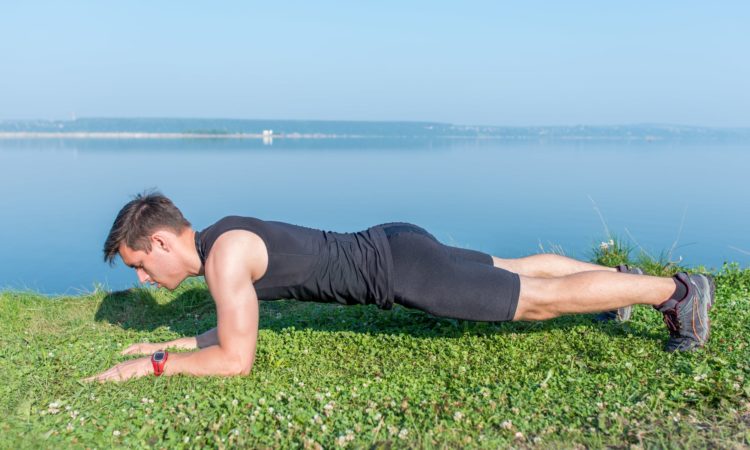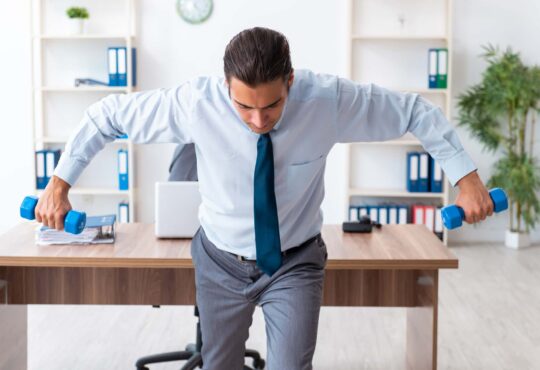
It’s not some leftwing or rightwing plot.
Scientists just keep studying exercise physiology and body mechanics, so we now know a lot more than we did 70 years ago. They’ve learned some of the old-school calisthenics we all had to do in gym class don’t work well.
And can even do more harm than good.
According to Pete McCall, a personal trainer who has taught instructors for the National Academy of Sports Medicine and the American Council on Exercise, anatomists used to remove the connective tissue from muscles. They looked at the remaining pieces separately, in isolation from each other. They manipulated the muscles while they lay flat.
But when we’re moving and exercising, we – and our muscles – don’t lie flat. We stand on two feet and must deal with gravity. Our muscles work together with our bones to give us the ability to move through space in many directions and dimensions.
In particular, we now know that historical exercises to strengthen abdominal muscles can damage your spine.
Avoid Sit-ups, Crunches, Curls, Supermans and Other Variations
Back in the old days, the anatomists observed our abdominal muscles pulled our spines around.
Therefore, to get strong, we needed to make our abs pull our spines – a lot.
Hence: sit-ups and crunches.
Besides, aren’t washboard or six-pack abs a sure sign of physical strength and fitness?
In reality, our abs don’t work alone. They’re just the most visible part of a team of muscles including your diaphragm, erector spinae, your pelvic floor and your obligues.
The trouble with sit-ups and crunches lies in how they affect the bones of our spine.
You can thank Stuart McGill, a biomechanics researcher, for saving today’s and future generations from damaging their spines by performing sit-ups.
He found: when you ask your spine to flex while bearing a heavy load (your upper body), that stresses your spinal disks.
It can cause back pain in later years.
Dr. Alf Nachemson developed a way to measure the pressure of exercise on your back’s disks.
The baseline is when you’re simply standing upright. In that position, your spine’s pressure is at 100 – obviously, normal.
When you lie flat on your back and lift your legs, the pressure goes up to 140.
When you’re raising your upper body in a curl, it’s 210.
When you do the sit-up variation where you’re raising both your upper body and your legs at once, the pressure on your spinal disks is off the charts.
Another way of measuring force is the newton (N) – 1-kilogram meter per second squared.
One sit-up places 3,300 N of pressure on your spine.
Here’s the context: The National Institute of Occupational Safety and Health says 3,300 N is the upper limit on low back compression. Anything above that is associated with higher rates of injury.
You don’t want unsafe working conditions on your job.
But you put the upper limit of pressure on your spine with EVERY sit-up you perform.
If your child’s gym teacher or coach is still making the kids do sit-ups or crunches, you want to educate them.
If your physical therapist is telling you to do them, get a new one who’s up-to-date.
Safe and Superior Ways to Strengthen Your Core
The Forearm Plank
Stuart McGill invented this exercise specifically to exercise the muscles of your core without damaging your spine.
In a test the military conducted, soldiers trained for weeks to see who could perform the most sit-ups at the end of the experiment.
One group trained by doing sit-ups every day. Group two trained by performing planks.
On the day of the contest, the soldiers in the second group could perform more sit-ups than the soldiers in the first group, even though they were the ones who’d been training with sit-ups.
Conclusion: the plank strengthens your core more effectively than sit-ups.
There are variations, but the most popular plank is the forearm plank.
a. Lie facedown on the floor with your toes on the ground – feet less than a hip’s width apart. Your forearms rest on the floor, with your elbows right at your shoulders.
b. Keeping your body straight, lift it all the way from the floor, so your toes and forearms hold your entire body weight.
c. Stay there.
You can keep your hands parallel to each other, or clasp them together. Keep your body in a straight line. Hold your posterior up with your abdominal muscles. Hold your head in a comfortable, neutral position.
d. Breathe as normally as you can through your nostrils.
Don’t hold your breath or breathe shallowly.
e. Hold for as long as you can maintain perfect positioning.
As you practice nearly every day, you’ll gradually be able to hold the plank longer. (The world record is 5 hours, 15 minutes and 15 seconds.)
Yet, not everybody considers the plank the abdominal-muscle equivalent of sliced bread.
Physical therapists Bob and Brad point out it’s a static, isometric exercise.
They advocate using a yoga/Pilates/exercise ball. There’re many exercises and variations using the ball that will give your core a great workout. Pilates really pioneered this.
If nothing else, just sit on the ball with your upper thighs parallel to the floor. That is, so your knees are above your waist.
Because the ball doesn’t give you the unyielding stability of a chair, this position forces your core muscles to work constantly, making small adjustments to maintain your balance as the ball keeps wanting to roll away.
It’s not as easy as it sounds.
You can buy these balls in sporting goods stores, yoga, and Pilates studios, and on Amazon.
https://www.youtube.com/watch?v=BQu26ABuVS0
https://www.pelvicfloorfirst.org.au/pages/how-long-can-you-plank.html
https://www.ncbi.nlm.nih.gov/pmc/articles/PMC2200702/
https://www.youtube.com/watch?v=6_meJuGJiGY
https://www.theatlantic.com/health/archive/2022/05/sit-ups-crunches-lower-back-pain/639437/
https://spinehealth.org/breaking-down-the-exercises-that-break-down-your-spine/
https://www.youtube.com/watch?v=VKDlyhvZLaA
https://www.youtube.com/watch?v=O4eNJOLPZVM







